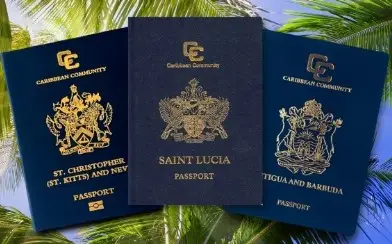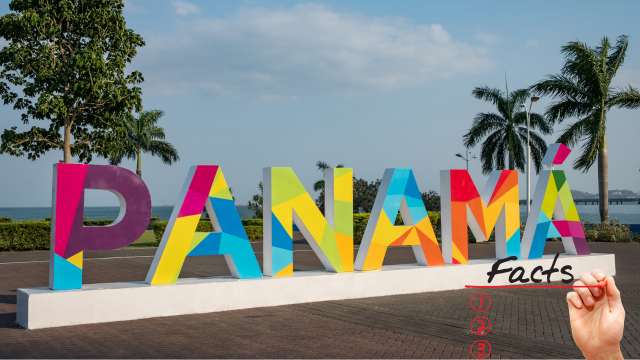10+ Interesting Facts About Bolivia: Discover This Unique South American Country
Bolivia, a landlocked country in the heart of South America, is rich in history, culture, and natural beauty. From its towering mountains and salt flats to its vibrant indigenous culture, Bolivia offers a unique experience for travelers and geography enthusiasts alike. Whether you’re planning a visit or just curious about this fascinating nation, here are some interesting facts about Bolivia that you might not know.
1. Bolivia Has Two Capitals
Unlike most countries that have a single capital, Bolivia has two: Sucre and La Paz. Sucre is the constitutional capital, where the country’s Supreme Court is located, while La Paz serves as the administrative capital, hosting the government and executive branch. La Paz is also the highest capital city in the world, sitting at an altitude of about 3,650 meters (11,975 feet) above sea level.
2. The Salar de Uyuni Is the World’s Largest Salt Flat
Bolivia is home to the Salar de Uyuni, the largest salt flat in the world, covering over 10,000 square kilometers (3,900 square miles). The stunning white landscape creates a mirror effect during the rainy season, making it one of the most photographed natural wonders on Earth. The area also contains half of the world’s lithium reserves.
3. Bolivia’s Lake Titicaca Is the Highest Navigable Lake in the World
Situated between Bolivia and Peru, Lake Titicaca is the highest navigable lake in the world, sitting at an elevation of 3,812 meters (12,507 feet). It is also the largest freshwater lake in South America. According to Inca mythology, Lake Titicaca is believed to be the birthplace of the sun.
4. Bolivia Has Over 30 Official Languages
While Spanish is the most widely spoken language, Bolivia recognizes 36 official languages, reflecting its rich indigenous heritage. The primary indigenous languages include Quechua, Aymara, and Guarani. This cultural diversity is deeply ingrained in Bolivia’s identity, with indigenous communities making up about 62% of the population.
5. The Bolivian Flag Features Three Colors with Symbolic Meaning
The Bolivian flag consists of three horizontal stripes: red, yellow, and green. Each color has symbolic meaning:
- Red represents the blood of national heroes.
- Yellow symbolizes Bolivia’s mineral wealth.
- Green signifies the country’s rich natural resources and agriculture.
6. El Camino de la Muerte Is the World’s Most Dangerous Road
Known as the “Death Road” (El Camino de la Muerte), the Yungas Road in Bolivia stretches from La Paz to Coroico and is famous for its sheer drops and narrow paths. Despite its reputation, it has become a popular destination for thrill-seekers, especially cyclists, looking to experience one of the most dangerous roads in the world.
7. Bolivia Is One of the Few Countries With a Navy, Despite Being Landlocked
Though Bolivia lost its coastline to Chile in the War of the Pacific (1879-1884), it still maintains a navy. This naval force patrols the country’s lakes and rivers, and its existence serves as a symbol of Bolivia’s hope to one day regain access to the sea.
8. The Madidi National Park Is One of the World’s Most Diverse Ecosystems
Bolivia is home to the Madidi National Park, one of the most biologically diverse places on the planet. Located in the Amazon basin, the park contains thousands of species of plants, mammals, birds, and insects, some of which are still being discovered. The park spans 19,000 square kilometers (7,336 square miles) and is a haven for ecotourism.
9. Bolivia Has One of the Largest Carnival Celebrations in South America
The Carnaval de Oruro is Bolivia’s largest annual celebration and is recognized as a UNESCO Masterpiece of the Oral and Intangible Heritage of Humanity. The event, which takes place in the mining town of Oruro, features parades, dances, and elaborate costumes celebrating both Catholic and indigenous traditions.
10. The Wiphala Flag Represents Bolivia’s Indigenous Peoples
In addition to the national flag, Bolivia uses the Wiphala flag, a multicolored checkerboard pattern that symbolizes the indigenous people of the Andes. The Wiphala represents social equality, cultural diversity, and unity, and is used alongside the Bolivian flag at official events and national holidays.
11. Bolivia Is Named After Simón Bolívar
Bolivia was named after the South American revolutionary leader Simón Bolívar, who played a key role in the region’s struggle for independence from Spanish rule. Bolívar is also known as the “Liberator” of several South American countries, including Venezuela, Colombia, Ecuador, and Peru.
12. Coca Leaves Are a Traditional Staple
In Bolivia, coca leaves have been used for centuries by indigenous people for medicinal and ritual purposes. The leaves are commonly chewed or brewed into tea to help combat altitude sickness, especially in high-altitude cities like La Paz. While the coca plant is also used to produce cocaine, the use of coca leaves in their natural form is legal and deeply rooted in Bolivian culture.
13. Bolivia Has the World’s Largest Butterfly Sanctuary
The Guembe Biocenter near Santa Cruz, Bolivia, is home to the world’s largest butterfly sanctuary. The center, located in a tropical garden, spans 24 hectares and houses thousands of butterflies, along with other wildlife and plant species native to the region.
14. La Paz’s Cholitas Are Strong Cultural Icons
The Cholitas are indigenous women known for their traditional clothing, including bowler hats and brightly colored skirts. Historically marginalized, Cholitas have now become symbols of empowerment in Bolivia. Many Cholitas have even gained recognition in wrestling matches, known as “Cholita Wrestling,” which combines traditional attire with professional wrestling.
15. Bolivia’s National Animal Is the Andean Condor
The Andean Condor, one of the largest flying birds in the world, is Bolivia’s national animal. With a wingspan of up to 10.5 feet (3.2 meters), this majestic bird can be found soaring above the Andes mountain range and holds great cultural significance in Andean mythology.
16. Bolivia Has Stunning Colonial Architecture
Many of Bolivia’s cities, particularly Sucre and Potosí, feature stunning colonial architecture, reflecting the country’s Spanish colonial past. Sucre, known as the “White City,” is a UNESCO World Heritage Site, celebrated for its well-preserved 16th-century buildings and picturesque streets.
Conclusion
Bolivia is a country of contrasts and surprises, from its dramatic landscapes to its rich cultural traditions. Whether you’re interested in history, geography, or simply exploring new cultures, these interesting facts about Bolivia showcase why it’s such a unique and captivating place. With its diverse indigenous heritage, natural wonders, and fascinating customs, Bolivia offers something for everyone.
So, the next time you think about South America, don’t forget about Bolivia – a hidden gem waiting to be discovered!



